Should We Use WAGOS or WIRENUTS?!?!
In the latest segment of Electrician U, Dustin answers the question- Should we be using Wire Nuts or Wago’s out in the field to splice our wires? While the answer in your head should seem easy enough, there are several things to consider when choosing your wire splicing materials.
01:39 - Pre-twist gang
02:50 - CODE TIME
08:55 - Why I use what I use
🤘⚡️MEMBERSHIP⚡️🤘
JOIN ELECTRICIAN U - become a member and get:
FREE Continuing Education every year
FREE Practice Exams
FREE Monthly Video Courses
FREE Weekly Live Instructor-Led Classes
FREE Monthly Educational Newsletter
Premium Members-Only Content
Private Discord Channel
Monthly Members-Only Discord Chats
Sign up here --- https://www.electricianu.com/electrician-u-membership/
🎧🎹MUSIC AND VIDEO:🎹🎧
https://www.facebook.com/descantmv
🎬✍️ART AND ILLUSTRATION:✍️🎬
https://www.daverussoart.com
First, lets establish WHAT a Wago is. Just like almost everything else in the electrical industry, there are several terms for each material! Wire splicing components are no different. Wago is actually a brand name (one of the first to produce the product) of a push in type wire connector; whereas a wire nut requires twisting force to accomplish the connection. They both have metal connections within the wire splicing item to ensure continuity of the splice, but Wago type wire connectors are much more efficient as they do not require the electrician to twist the wires together with a tool before applying the connector (or using the connector to do the twisting) but the electrician simply pushes the wires into the connecting holes and the metal jaws do the rest of the work.
The NEC requires that things be installed per the manufacturer’s instructions. You can find the code reference in Article 110.3(B) of the NEC. In a nutshell, it states that if you do have a piece of equipment that is labeled, listed, or both that you SHALL install AND use per the instructions that are included in the labeling or listing. There are instances within the NEC that do require things to be listed, but this is an item-by-item requirement and should be researched for each task you are performing. Article 110.14 (Electrical Connections) governs wire splicing materials. In essence, it tells us that they wire connectors be identified for the material of the conductor (either copper or aluminum or both) AND shall be properly installed and used. So, having said all of that, as far as the NEC is concerned, if we are using a wire splicing method that is approved for what we are doing with it, identified for the materials being spliced, and installed per the manufacturer’s instructions, pressure type wire connectors are fine.
If the NEC is good with it, next would be installer preference. If it is an item that probably won’t be serviced or changed often (say a residential switch or receptacle) then wire nuts would be the way most of us would go. We would twist our wires together, install the device, and push it back in the box and leave it. There is really no need to get back into it unless something goes wrong, or the device wears out or something like that. If it is something that will most likely require replacement (such as the rows of fluorescent fixture ballasts in warehouses or large retail stores) then a Wago type wire connector may be more beneficial for us to use as we would not have to untwist each and every joint to replace the item.
Wire composition is another factor to consider. Most pressure type wire connectors do not do a great job on stranded conductors but are made more for solid wires. However, Wago DOES have some lever lock type push in wire connectors that will accept stranded wires. As with anything, do your research on what you are wanting to use to see all the different options available. Cost is also another thing to keep in mind when selecting wire connectors. Wago type wire connectors are usually much higher than standard wire nut type, although they have come down in price considerably over the past several years. Keep in mind that what you are paying for is efficiency, so the cost of the material may justify itself if it saves the installing electrician time in installing several of these.
#electrician #electrical #electricity
-
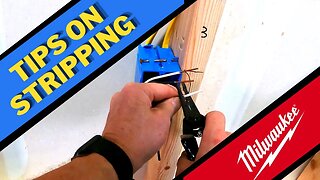 12:56
12:56
Electrician U
2 years agoTechniques on Stripping Wire - Awesome Tools to Help Electricians
1.14K -
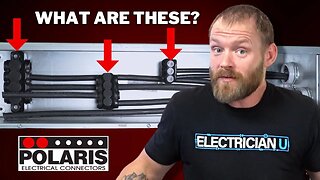 18:18
18:18
Electrician U
1 year agoWhat Are Polaris Taps? How Do You Connect Large Gauge Wires?
916 -
 1:36:18
1:36:18
JeffreyMaster
8 months ago $0.01 earnedJeffrey Henderson | DIY Miniature Wire Spot Welder | Precision Wire Frame Modelling System | Part 2
6711 -
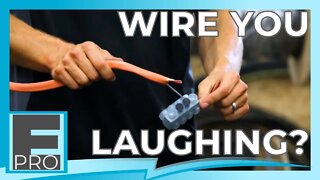 26:21
26:21
EPro - Electric Pro Academy
2 years agoWire and Wiring Connections
161 -
 0:17
0:17
JTXTOOLS
3 months agoWERA VDE Screwgripper Attachment, for 4.5mm to 6.0mm screws and 6.5mm to 8.0mm screws
4 -
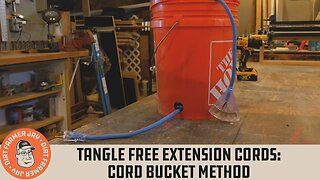 8:10
8:10
DirtFarmerJay
10 months agoThe Cord Bucket Method for Tangle-Free Extension Cords!
29 -
 1:28
1:28
StraightArrowRepair
2 years agoHeavy Duty Hand Winch With Cable
40 -
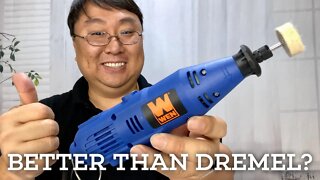 6:53
6:53
Peter von Panda
4 years agoWEN 2305 Rotary Tool Kit Review
120 -
 1:03
1:03
Science Projects
2 years agoHow to use the lever type wire connecter
1 -
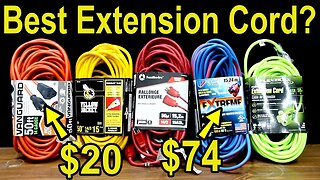 16:44
16:44
Project Farm
1 year ago $0.01 earnedBest Extension Cord? Flexzilla, US Wire, Yellow Jacket, Southwire, Husky, Woods, Bergen Industries
76